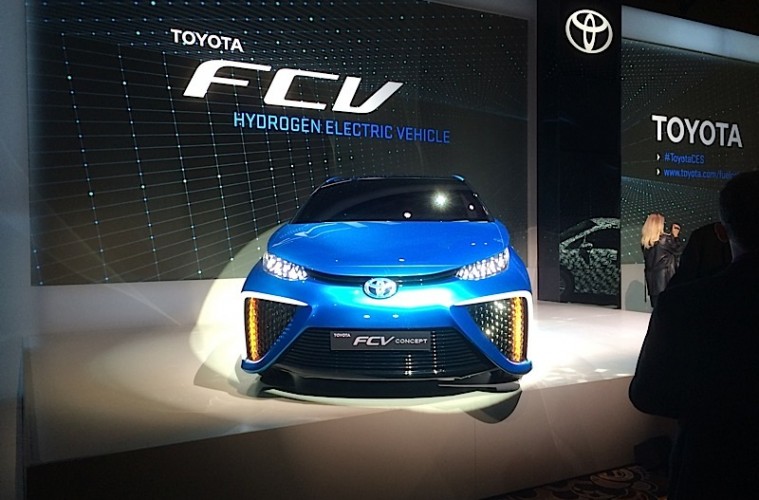At the 2014 International CES, Toyota took some time to update the public on their fuel cell development project. Currently, Toyota is working on a yet unnamed vehicle that will go on sale in 2015 that will feature of the most advanced fuel cell technology systems available. Along with releasing the vehicle, Toyota is assisting the State of California in helping build out a fuel cell refueling infrastructure. By 2016, they believe that they will be able to handle over 10,000 fuel cell vehicles in service.
“Change takes persistence,” asserts Bob Carter, Senior Vice President of Automotive Operations for Toyota, when talking about fuel cell technology. Toyota does not believe that it is an overnight process to change minds about the technology, and liken the current fuel cell movement to the hurdles the company faced when getting the public to accept gasoline-electric hybrid technology.
Their car will come to market in 2015 and features some advanced technology. It will take approximately 3-5 minutes to refuel, because they do not needs as big of a hydrogen tank to go the distance of a comparative gasoline vehicle. They are utilizing voltage boosting technology to generate nearly 3x the amount of power of current Toyota fuel cell components.
Performance will be sufficient, but not sporty. 0-60MPH will take approximately 10 seconds, and the top speed of the vehicle will be around 100MPH. The system’s total output should be around 100KWs.
The design of the vehicle is functional. The big front grille is functional to move cold air through the hydrogen cooling system. Safety is a primary concern, and they have been spending a great deal of time crash testing prototypes to make sure that the system is safe for everyone.
Toyota does recognize that no matter how good a fuel cell vehicle is, the infrastructure needs to exist to refuel. There are only 10 stations currently in California. That is about to change soon, though. Using advanced modeling, it was determined that most people like to have a refueling station approximately 6 minutes from their home. Based on current population density, it is determined that a mere 68 stations could comfortably take care of California will still being convenient for everyone. It is not how many stations there are, but rather the location of the stations.
That amount of stations could easily cover 10,000 vehicles comfortably, and as the fuel cell vehicle fleet grows, so will the stations. Using this modeling Toyota predicts that only 15% of the total number of gasoline stations need to be hydrogen in order to handle fuel cell vehicle growth.
We expect to hear more in the coming weeks about their fuel cell plans, and be able to put a name to the face of Toyota’s Fuel Cell Vehicle.





